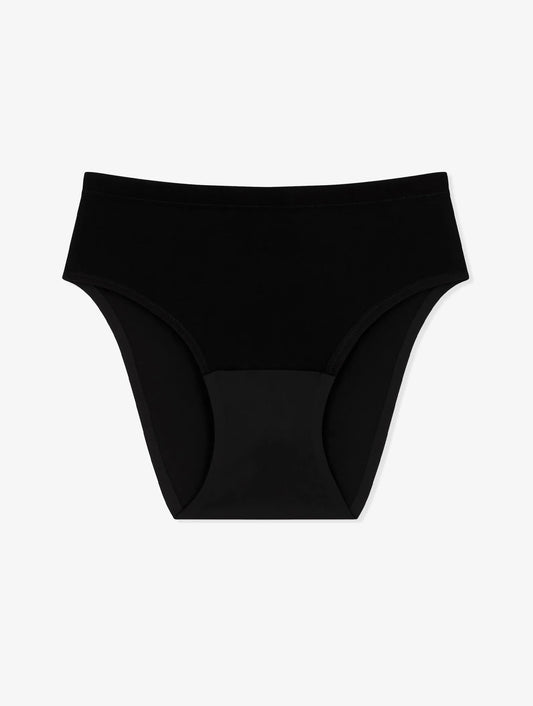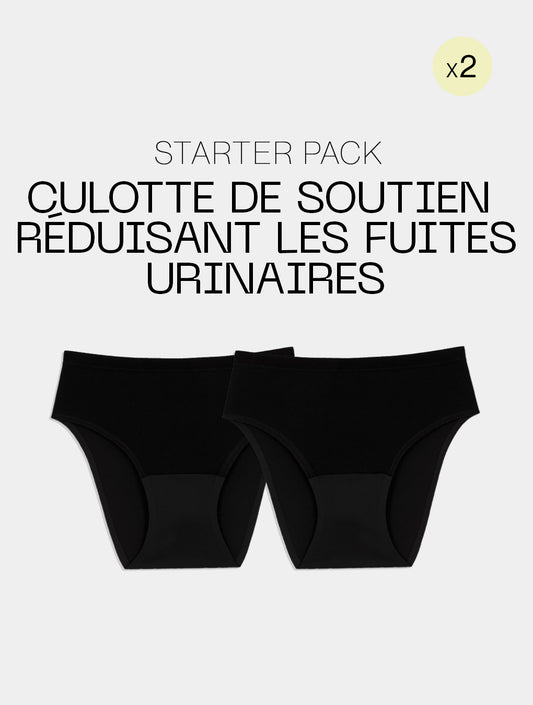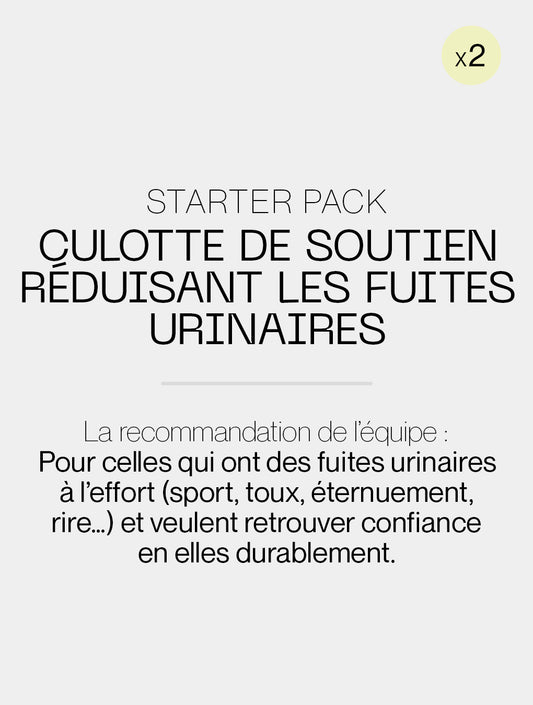Reimbursement of urinary protection by the CPAM: how does it work?

Do you suffer from incontinence and are you wondering if the CPAM (Primary Health Insurance Fund) reimburses urinary protection? And what type? We tell you everything.
Reimbursement of urinary protection by the CPAM: what are we talking about?
In the context of the reimbursement of urinary protections by the CPAM, it is essential to understand that urinary protections are not directly covered by Social Security.
However, in certain specific cases, after examining the insured's file, the CPAM could grant a contribution to non-reimbursable expenses , as in the case of chronic illnesses.
This means that, in the absence of direct reimbursement, it may be possible to obtain financial assistance to cover part of the cost of urinary protection.
It is also important to mention that the allocation of this aid is subject to a means test and requires presentation of relevant supporting documents .
Anti-urinary leakage panties?
In the same vein as urinary protection, anti-urinary leakage panties or more precisely support panties helping to limit urinary leakage are also an effective way to deal with incontinence. Designed to absorb leaks and contain odors , these special panties allow the individual to continue leading a normal life despite incontinence, much like period panties .
However, it is necessary to specify that, just like urinary protection, anti-leak pants are not systematically reimbursed by the CPAM. Indeed, care depends on the situation of each individual and the resources available .
However, it is possible to obtain exceptional assistance for the purchase of this protection in certain specific cases, such as chronic illnesses or a state of dependence. To do this, a request must be made to the CPAM, which will then assess the situation of the insured.
It is therefore strongly recommended to obtain information and assert your rights to obtain financial assistance adapted to your situation.
Other organizations than the CPAM to be reimbursed for urinary protection?
Urinary incontinence is a common problem, especially among older people. Although urinary protection is essential to manage this situation, their reimbursement by the CPAM is often non-existent.
However, other organizations such as mutual societies or Community Social Action Centers can offer financial assistance . It is also important to choose suitable protection to avoid irritation. This guide explains how to navigate this complex urinary protection reimbursement landscape.
Understanding incontinence in older adults
Incontinence in the elderly is manifested by involuntary loss of urine. It affects more than 2.6 million people over 65 in France. This phenomenon of urinary leakage can result from various causes , such as aging , certain illnesses or even side effects of medical treatments. Urinary leaks can occur during exercise or following an irrepressible urge to urinate. Although it is a taboo subject, it is crucial to address it to find suitable solutions and improve the quality of life of seniors.
The different solutions to deal with urinary leakage
Solutions for urinary leakage come in several options, depending on the degree of incontinence and preferences of each individual. The medical option offers treatments for urinary leakage ranging from perineal rehabilitation to surgery for urinary leakage through specific medications. These solutions can be effective but often require regular medical monitoring to verify their effectiveness.
On the other hand, the use of urinary protection is a common solution to manage incontinence on a daily basis. There are different types of pads, from adult diapers to disposable absorbent briefs, suitable for different degrees of incontinence.
Finally, it is also possible to benefit from certain financial aid to finance the purchase of these protections. We can cite the Personalized Autonomy Allowance (APA) and the Disability Compensation Benefit (PCH) for eligible people. These aids can significantly reduce the cost of these protections, which can be quite significant for those who need them on a daily basis.
Coverage of urinary protection by the CPAM: reality or myth?
The CPAM, or Primary Health Insurance Fund, is often associated with the reimbursement of medical expenses. However, when it comes to urinary protection, the situation is more complex . In fact, these products do not appear on the CPAM’s List of Reimbursable Products and Services. However, there are exceptions.
The CPAM can provide exceptional assistance for certain patients, particularly those affected by chronic illnesses. In this case, after examining the insured's file, it can cover part of the non-refundable expenses, such as urinary protection.
It should be noted, however, that this support remains very restrictive and depends on the assessment of each Departmental Fund, which has limited budgets.
Alternative aid: mutuals and other organizations
In addition to the APA or the PCH, other options can be considered to obtain financial support in the purchase of urinary protection. Mutual insurance companies often offer packages dedicated to this expense , in addition to the basic Social Security system.
It is also possible to turn to the Municipal Social Action Centers (CCAS) and the General Council of your department which can grant aid under certain conditions. In certain cases, if the patient has recognition from the MDPH, he or she can make a request for specific help.
Finally, pension funds can also offer financial assistance for the purchase of urinary protection. It is therefore advisable to contact these different organizations to find out about the assistance possibilities.
Reimbursement of adult diapers: how to proceed?
To obtain reimbursement for adult diapers, the first step is to consult a doctor who can assess your medical situation and determine the need to use these protections. Then, you will need to submit your request for support to the Health Insurance social service.
It should be noted that reimbursement for adult diapers is not systematic . It is granted in two specific situations:
- In the event of a chronic illness where the use of protection is linked to this pathology.
- In the case of keeping a sick person at home.
If you are over 60 years old and in professional activity, you can benefit from the Disability Compensation Benefit (PCH). If you met the conditions for PCH before age 60, you can also claim it.
The reimbursement request must be accompanied by supporting documents, such as invoices for the protection purchased.
Choose protection adapted to your situation
Selecting urinary protection requires a careful assessment of your situation. The degree of autonomy influences the choice of protection: your ability to go to the toilet alone or not will determine the most appropriate type of protection. The importance of urinary leakage is another determining factor: for minimal leaks, a simple absorbent brief may be sufficient, while more significant leaks require more effective protection.
- For mild to moderate incontinence, men's absorbent briefs or shells are usually sufficient.
- For more severe incontinence, full diapers or adult diapers are often necessary.
Remember that the main goal is to maintain a level of comfort and dignity, while providing effective protection against urinary leakage. It may be beneficial to test different products before making a final choice.




